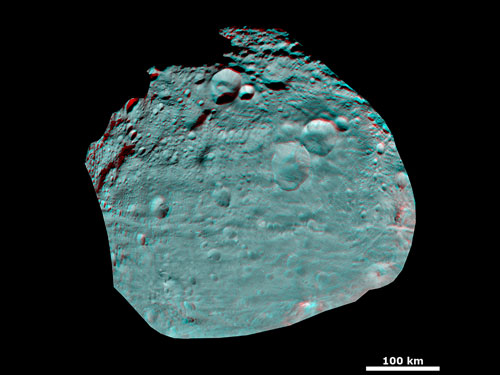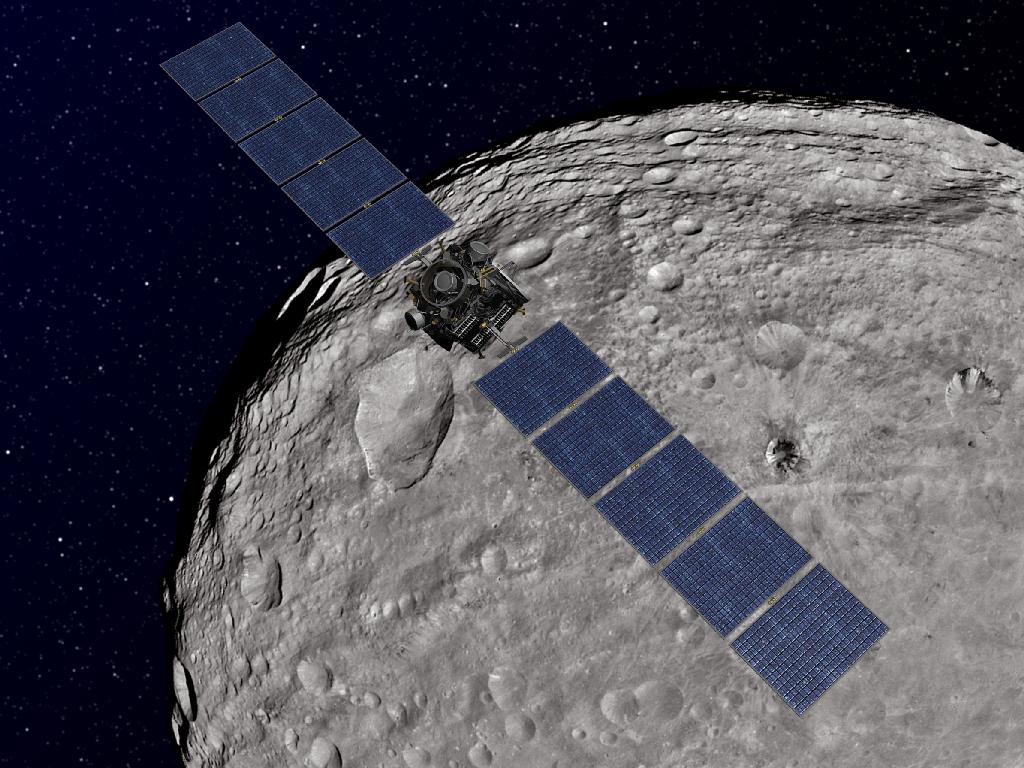NASA to Reveal New Vesta Discoveries by Asteroid Probe Thursday

NASA will showcase the latest discoveries from an asteroid probe orbiting the huge space rock Vesta on Thursday (May 10) in a press conference for reporters and the general public.
The conference, which will begin at 2 p.m. EDT (1700 GMT) on Thursday, will present a new analysis of Vesta based on the latest observations from NASA's Dawn spacecraft, which has been orbiting the asteroid since last July.
The $466 million Dawn spacecraft launched in 2007 on a mission to visit two huge space rocks in the asteroid belt that orbits the sun between the orbits of Mars and Jupiter.
Vesta is the brightest asteroid in the solar system and second most massive object in the asteroid belt, is Dawn's first stop. Dawn arrived in orbit around Vesta in July 2011. [Photos: Asteroid Vesta by Dawn Probe]

On Thursday, NASA will broadcast the press conference on Dawn's new findings about Vesta live via its NASA TV channel. The event will also be webcast online at: http://www.nasa.gov/ntv
Participants for the press conference include:
- Carol Raymond, Dawn deputy principal investigator, NASA's Jet Propulsion Laboratory, Pasadena, Calif.
- Harry McSween, chair, Dawn surface composition working group, University of Tennessee, Knoxville
- Vishnu Reddy, Dawn framing camera team member, Max Planck Institute for Solar System Research, Katlenburg-Lindau, Germany; and the University of North Dakota, Grand Forks
- David O'Brien, Dawn participating scientist, Planetary Science Institute, Tucson, Ariz.
- Maria Cristina De Sanctis, Dawn co-investigator and visible and infrared mapping spectrometer team lead, Italian National Institute for Astrophysics, Rome
NASA plans to stream the event live on Ustream here: http://www.ustream.com/nasajpl2
Breaking space news, the latest updates on rocket launches, skywatching events and more!
The space agency's social media fans can also ask questions about Vesta via Twitter by using the hashtag #asknasa, NASA officials said in an announcement.
Last month, NASA extended Dawn's stay at Vesta by an extra 40 days to give the spacecraft more time to study the asteroid. So far, the spacecraft has revealed that many new details about Vesta, including that it is rich in iron and magnesium, and experiences chilly temperatures that range from minus 10 degrees Fahrenheit (minus 23 degrees Celsius) in the sunlight, to minus150 degrees F (minus 100 degrees C) in shadowed areas.
Scientists think Vesta is a 4.5 billion-year-old relic left over from the formation of the solar system.
NASA's Dawn spacecraft is the first spacecraft ever aimed at visiting two asteroids in the asteroid belt. In August the probe will move on to the Texas-size Ceres, the largest object in the asteroid belt and a space rock so large it is considered a dwarf planet.
The Dawn probe is expected to arrive at Ceres in February 2015.
Follow SPACE.com for the latest in space science and exploration news on Twitter @Spacedotcom and on Facebook.
Join our Space Forums to keep talking space on the latest missions, night sky and more! And if you have a news tip, correction or comment, let us know at: community@space.com.

Space.com is the premier source of space exploration, innovation and astronomy news, chronicling (and celebrating) humanity's ongoing expansion across the final frontier. Originally founded in 1999, Space.com is, and always has been, the passion of writers and editors who are space fans and also trained journalists. Our current news team consists of Editor-in-Chief Tariq Malik; Editor Hanneke Weitering, Senior Space Writer Mike Wall; Senior Writer Meghan Bartels; Senior Writer Chelsea Gohd, Senior Writer Tereza Pultarova and Staff Writer Alexander Cox, focusing on e-commerce. Senior Producer Steve Spaleta oversees our space videos, with Diana Whitcroft as our Social Media Editor.
